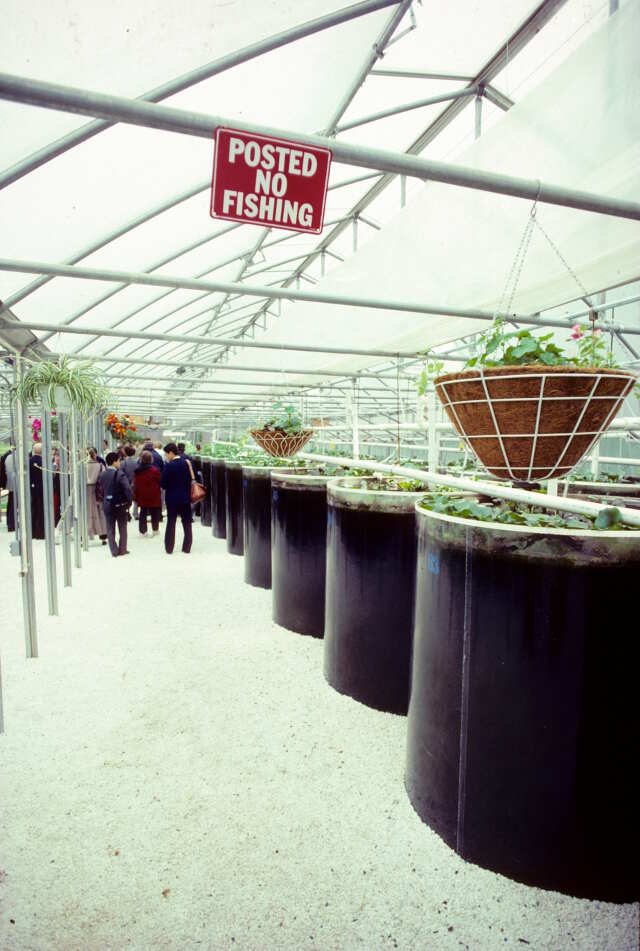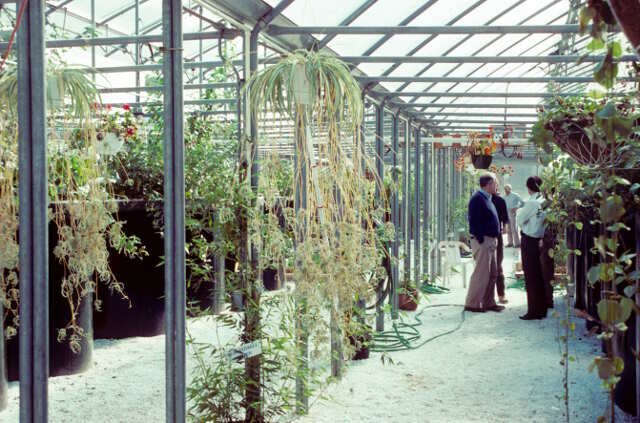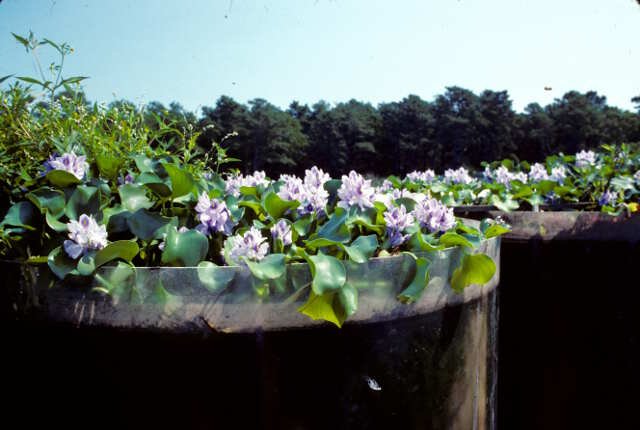
Harwich Septage Treatment Pilot Plant
Harwich, Ma.
As a means to provide assistance to the Town of Harwich in solving its septage disposal problems and demonstrate the efficacy of “solar aquatics” in adequately treating septage to the stringent standards required for groundwater discharge, Ecological Engineering Associates – a precursor to John Todd Ecological Design – implemented a Solar Aquatic System at the town’s landfill. Through the use of a combined aquaculture/constructed wetlands systems that typically employs bacteria, algae, zooplankton, aquatic plants, nonaquatic plants and animals for the removal of pollutants from a waste stream, this pilot study was specifically designed to treat the combined sludge and liquid pumped from residential and commericial septic tanks, or septage, which had been disposed of in lagoons. Housed within a greenhouse to allow for year-round operation, this pilot plant system ran from March 26, 1990 to July 31, 1992.
The majority of pilot plant operations were divided into two distinct phases: the start-up phase; and the routine operations phase. Initiated on March 26, 1990 and ending on April 26, 1991, the start-up phase was intended to be a period of system adjustment and acclimation to the septage. In addition to accomplishing its intended purpose, the start-up phase was extended for many months while numerous modifications were made to improve the workability of the system. Once a period of steady operating conditions and performance was achieved, the system was considered to be in the routine operations phase, however, due to the length start-up phase, the start of routine operations phase was determined administratively rather than solely on a technical basis. This phase began on June 1, 1991 and continued through March 31, 1992. After the routine operations phase, the pilot plant remained in open for four more month for a shorter, stress testing phase.
Data from the study indicated that throughout both the start-up and routine operations phase the Solar Aquatic System treated a total volume of 2.09 million gallons and provided a noticeably higher level of septage treatment that was previously provided by the former Harwich septage lagoons. Although the actual capacity of the system did not appear to be reached due to its inability to handle the solids loading associated with untreated septage, effluent characteristics on average met both the target limits and the expected permit limits for the ten months of the routine operations phase. The Solar Aquatic System achieved very high removal of BOD, total suspended solids (TSS), and nitrogen, as well as substantial removal of phosphorus. Furthermore, high quality effluent was maintained under a wide range of operating temperatures and loading rates during the routine operations phase, including the combination of low temperatures and high nitrogen loading rates.


